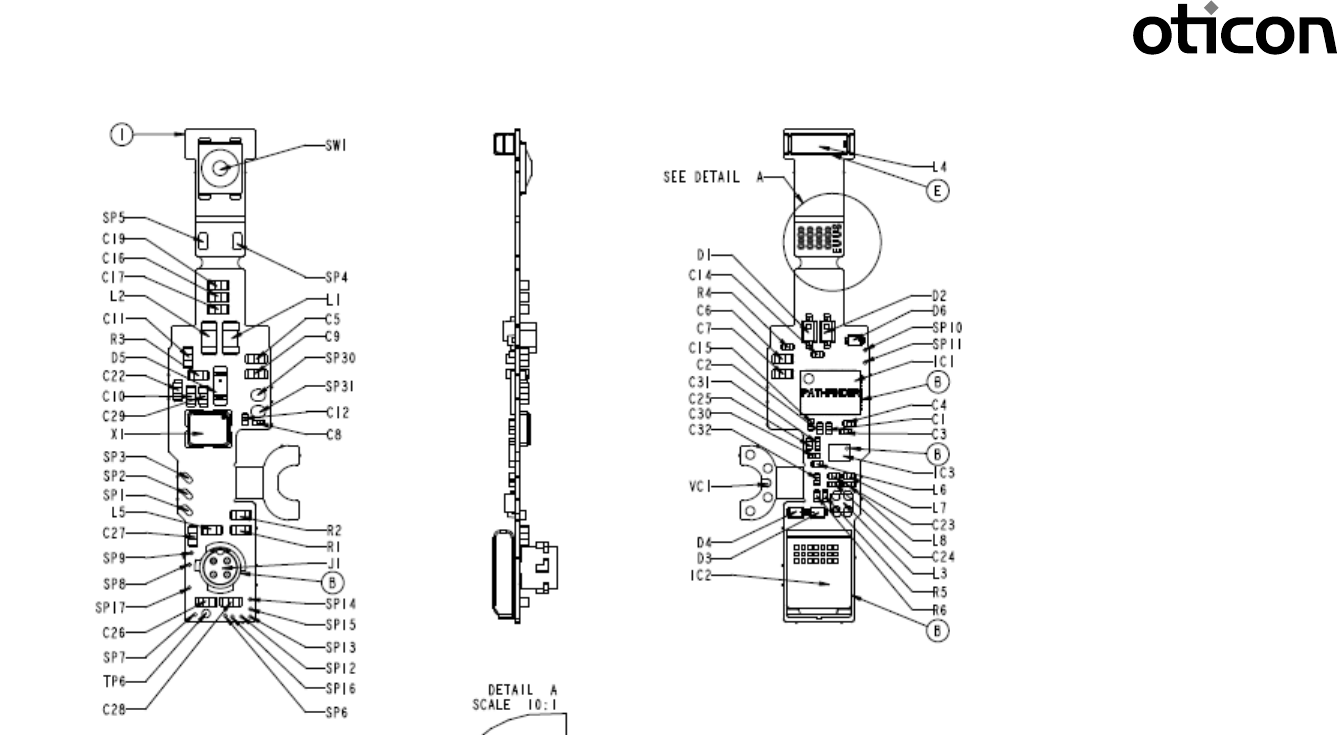Oticon A S FU2ALD01 ALD VHF receiver module User Manual InstallationGuide
Oticon A/S ALD VHF receiver module InstallationGuide
InstallationGuide.pdf

PEOPLE FIRST
Oticon A/S Kongebakken 9 DK-2765 Smørum www.oticon.com
Main +45 39 17 71 00 Fax +45 39 27 79 00 Denmark CVR-no. 42334219 1
Oticon Radio Model - Quick Installation Guide
Radio Model Name: ALD VHF Receiver module
The ALD Receiver module radio model is built consists of a radio IC and an audioprocessor, both mounted on a common flex PCB.
The radio IC provides low power 3,71 MHz magnetic 2-way communication and also FM VHF reception in 2 bands; 169-188 or 208-218MHz yielding 2 HW
variants. The frequency reference for both wireless systems in Amigo Star is a single crystal.
Other external components are attached to the PCB:
* An FM antenna is connected by hand soldering to pick up VHF signals for the radio IC.
* A Coil is connected by SMT for the the magnetic data communication by the radio IC.
* A speaker is connected by hand soldering to the PCB for audio output to the user through a thin tube.
* Battery springs are hand soldered to the PCB to provide power to the device.

PEOPLE FIRST
Oticon A/S Kongebakken 9 DK-2765 Smørum www.oticon.com
Main +45 39 17 71 00 Fax +45 39 27 79 00 Denmark CVR-no. 42334219 2

PEOPLE FIRST
Oticon A/S Kongebakken 9 DK-2765 Smørum www.oticon.com
Main +45 39 17 71 00 Fax +45 39 27 79 00 Denmark CVR-no. 42334219 3
Oticon Radio Model - Quick Installation Guide
Radio Model Name: ALD VHF Receiver module
Contains FCC ID: U28FU2ALD01
IC: 1350B-FU2ALD01
NOTICE:
This device complies with Part 15 of the FCC Rules and with RSS-210 of Industry Canada.
Operation is subject to the following two conditions:
(1) This device may not cause harmful interference, and
(2) This device must accept any interference received, including
interference that may cause undesired operation.
Changes or modifications made to this equipment not expressly approved by (manufacturer name) may void the FCC authorization to operate this
equipment.
Le présent appareil est conforme aux CNR d'Industrie Canada applicables aux appareils radio
exempts de licence. L'exploitation est autorisée aux deux conditions suivantes:
(1) l'appareil ne doit pas produire de brouillage, et
(2) l'utilisateur de l'appareil doit accepter tout brouillage radioélectrique subi, même si le brouillage est susceptible d'en compromettre le
fonctionnement.